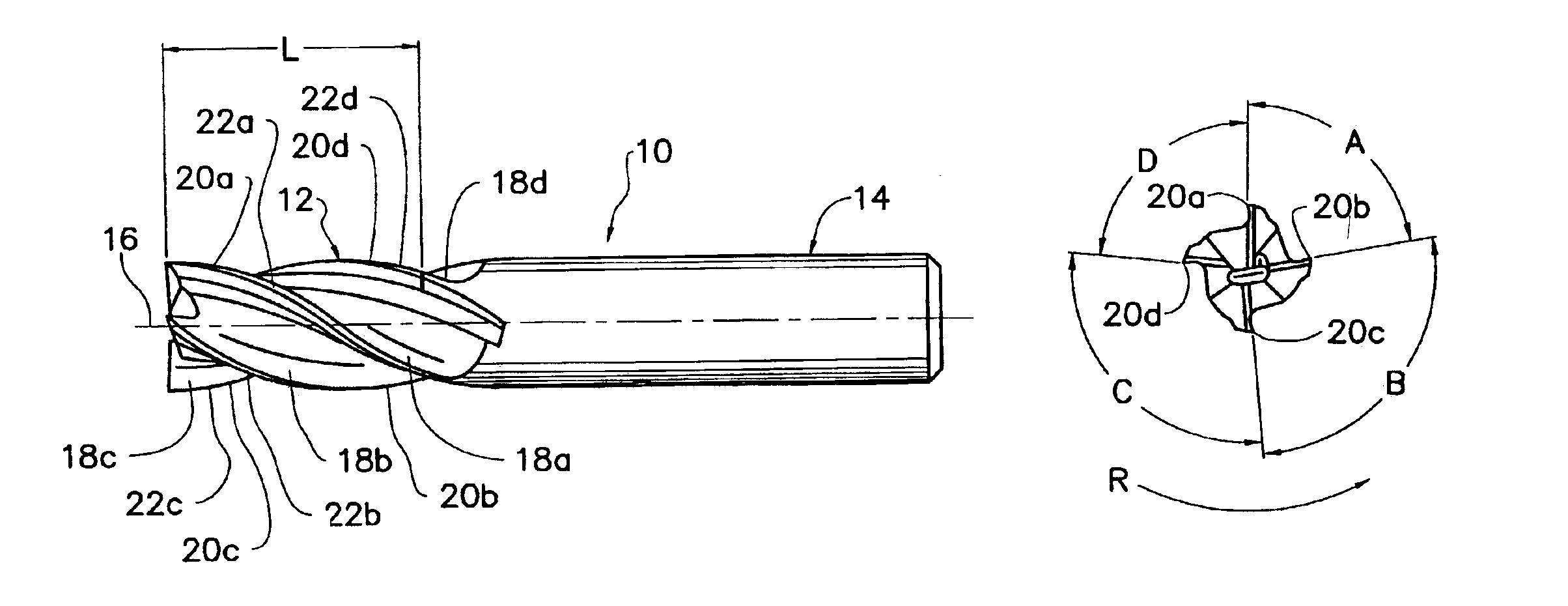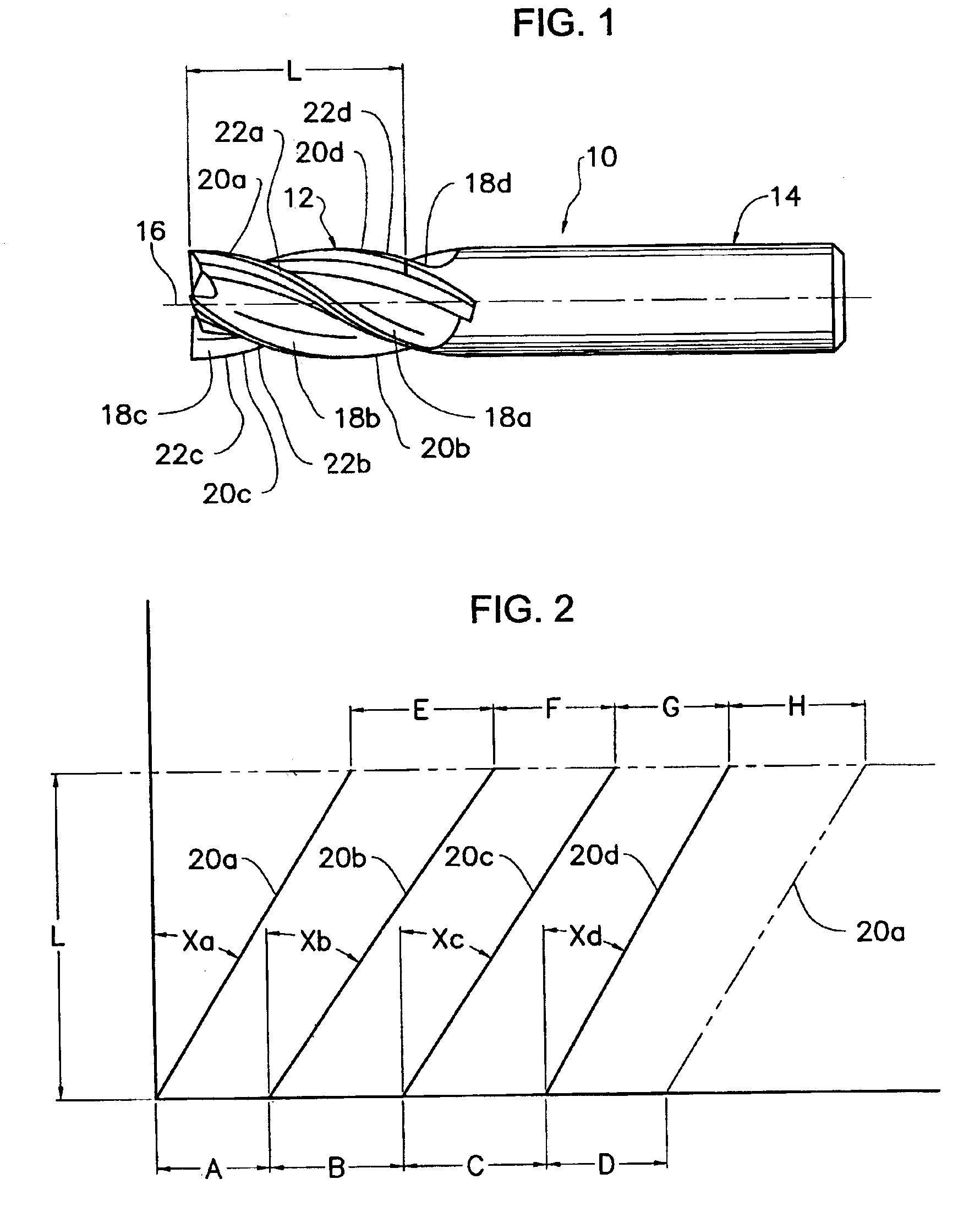Rotary cutting tool
a cutting tool and rotary technology, applied in the field of rotary cutting tools and end mills, can solve the problems of shock resistance, vibration along with heat and wear resistance, and the inability to address satisfactorily the concern of resonant vibration or shock resistance, so as to reduce, if not eliminate, the resonant vibration. , the effect of excellent cutting operation
- Summary
- Abstract
- Description
- Claims
- Application Information
AI Technical Summary
Benefits of technology
Problems solved by technology
Method used
Image
Examples
first embodiment
[0072]FIGS. 1 through 7 show a four-flute end mill in accordance with the present invention.
[0073]FIG. 1 shows an end mill 10 that includes: a cutting body 12; a shank 14; four radial cutting edges (20a, 20b, 20c, and 20d); four radial rake faces (18a, 18b, 18c, and 18d); four radial relief faces (22a, 22b, 22c, and 22d); a cutting length L; and a rotational axis 16. The cutting body 12 may be made of high speed steel, cemented carbide, cermet, or any other material or combination of materials that can be used to make rotary cutting tools.
[0074]FIG. 2 shows the schematic view of the circumference of the cutting body 12. In this schematic view it is shown across the cutting length L that: the radial cutting edge 20a has a helix angle of Xa, a circumferencial index difference of angle A in relation to radial cutting edge 20b at the front of the cutting body 12 and a circumferencial index difference of angle E in relation to radial cutting edge 20b at the back of the cutting body 12; t...
third embodiment
[0094]FIGS. 16 through 19 show a modified four-flute end mill in accordance with the present invention, that being the addition variation of the axial cutting edges (26a, 26b, 26c, and 26d).
[0095]FIG. 16 shows a modified end mill 10 the same as FIG. 9 that includes: a cutting body 12 and a shank 14. This illustration is used to locate an end view of the axial cutting teeth for FIG. 17 and the enlarged side view of the axial cutting edges for FIG. 18, to explain the addition variation of the axial cutting edges (26a, 26b, 26c, and 26d).
[0096]FIG. 17 shows the end view of the cutting body 12 in FIG. 16 taken along the line 17—17 of FIG. 16 that includes: four radial cutting edges (20a, 20b, 20c, and 20d); four axial cutting edges (26a, 26b, 26c, and 26d); four axial rake faces (24a, 24b, 24c, and 24d); four axial relief faces (28a, 28b, 28c, and 28d).
[0097]FIG. 18 shows the enlarged fragmentary side view of the cutting body 12 in FIG. 16 taken from the view of FIG. 16 that includes: t...
PUM
 Login to View More
Login to View More Abstract
Description
Claims
Application Information
 Login to View More
Login to View More - R&D
- Intellectual Property
- Life Sciences
- Materials
- Tech Scout
- Unparalleled Data Quality
- Higher Quality Content
- 60% Fewer Hallucinations
Browse by: Latest US Patents, China's latest patents, Technical Efficacy Thesaurus, Application Domain, Technology Topic, Popular Technical Reports.
© 2025 PatSnap. All rights reserved.Legal|Privacy policy|Modern Slavery Act Transparency Statement|Sitemap|About US| Contact US: help@patsnap.com



